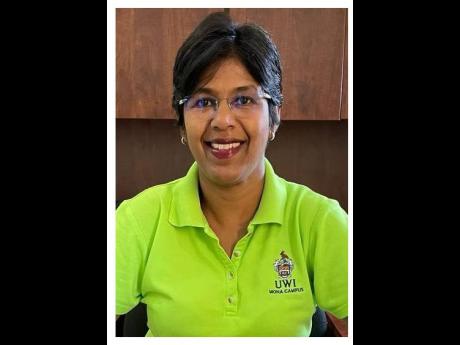The problem of lightning
Are we implementing protocols to reduce risk of injury?
AS WE approach the end of the hurricane season, I was reflecting on changing weather patterns and specifically contemplating lightning strikes.
Globally there are approximately 24,000 deaths due to lightning strikes and triple this number in lightning-related injuries. For the United States of America, the National Weather Service estimates 30 deaths per year associated with lighting strikes with two-thirds occurring during recreational activities.
Holle, Cramer, Laing, and Thompson at the 2022 36th International Conference on Lightning Protection, reported that Jamaica had 16 deaths related to lighting strikes from 2005 to 2021 and 39 injuries. Football was the only sport reported to have had persons injured.
On September 20th 2023, it was Déjà vu as I read the Jamaica Gleaner article titled “Lightning strike sends seven to hospital during d’Cup match”. A lightning strike resulted in six players and an assistant referee being taken to hospital. Four years earlier on September 16th 2019, the Gleaner headline read “Footballer in hospital after lightning strike in Wolmer’s, JC match”. Four boys were injured by a lightning strike towards the end of an Inter-secondary school tournament.
Just one month later on October 2nd 2019, another school match was disrupted by lightning strikes and another schoolboy taken to hospital.
Lightning amid drought
In July 2022, the Rugby Americas North Regional Male Under 19 and Senior Women’s’ 12s tournament was held at the UWI Mona Bowl. One match was suspended due to lightning risk. An emergency action plan was in place and enacted, but I never thought we would have to stop a match due to lightning risk, given the drought we were suffering.
After that, I became been more observant and frequently noticed outdoor sport training and events proceeding with minimal regard for the presence of thunder and lightning.
Is it that coaches, athletes, trainers, event organisers are unaware of the dangers and existing safety guidelines? Or is it that they simply choose to ignore these and hope for the best?
Sport organisations must have a lightning policy and action plan in place and adhere to it. Coaches, athletes, managers and event workers must be fully educated on the policy and action plan. We do not have to reinvent the wheel. We simply need to apply and adopt existing international guidelines to local circumstances.
At minimum, the following items must be addressed in lightning protocols: who should monitor the weather and decide on suspension or postponement; when should activities be stopped and resumed; where should people go for safety; and what should be done if someone is struck by lightning.
There must be a designated weather marshall with access to reliable weather data and if possible, a local meteorologist. The designated person should be known to relevant personnel, who must respect the decisions made.
Match officials, coaches and players involved in the game are not the most appropriate marshalls for an event. Schools must have a sport lightning policy to guide decisions regarding participation of their team in a tournament.
The weather marshall is expected to monitor the weather reports. If a thunderstorm is approaching, the event should be postponed. Depending on the anticipated duration of bad weather, suspended. If thunder is heard or lightning is seen there should be an immediate suspension, and evacuation to the designated shelter. The suspension remains in effect until 30 minutes after the very last sound of thunder is heard or lightning seen.
If the lightning is more than five nautical miles (9.26 km) away from the venue and is continuing to move away the event can be resumed. If you can hear thunder, then the lightning is near enough to be hazardous.
Enclosed shelters
Designated shelters should be properly enclosed structures with adequate space to ensure that persons can remain far away from plumbing and electrical wiring. Open tents, gazebos and refreshment stands are not appropriate shelters for protection from lightning strikes. For school tournaments, there must be access to auditoriums or classrooms or other properly enclosed spaces for both the home and visiting teams. The school bus can be used but it should not be the first option.
In the unfortunate situation of a lightning strike, affected persons must be immediately taken to a safe space and first aid employed until they can be taken to hospital.
All medical personnel/first aiders designated for events must be educated on first aid protocols for lightning strikes.
The climate is changing but there are patterns that can be used to guide scheduling of events to reduce probability of disruption from thunderstorms. Let us not wait for deaths to occur to rethink schedules and shape policies.
Sport Pulse and Sport Matters are fortnightly columns highlighting advances that impact Sport. We look forward to your continued readership. Dr. Sharmella Roopchand Martin is the Deputy Dean for Research & Grants at the Faculty of Sport and can be reached at sharmella.roopchandmartin@uwimona.edu.jm



